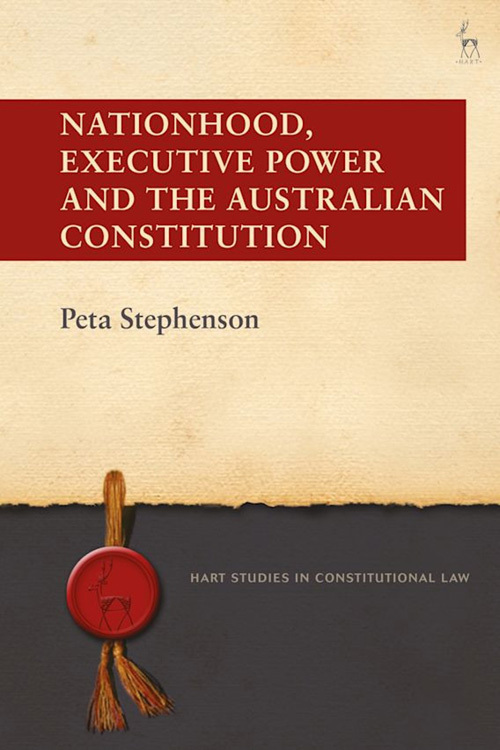- Autumn 2023
- Nationhood, Executive Power and the Australian Constitution

Nationhood, Executive Power and the Australian Constitution Dr Peta Stephenson (Hart, 2022)
The High Court has recognised ‘there is to be deduced from the existence and character of the Commonwealth as a national government and from the presence of ss 51(xxxix) and 61 a capacity to engage in enterprises and activities peculiarly adapted to the government of a nation and which cannot otherwise be carried on for the benefit of the nation’.1

Notwithstanding Mason J’s caution that the scope of the nationhood power was not unlimited, and could not be exercised to effect a ‘radical transformation’ of the federation, as Dr Stephenson explains the Commonwealth has extensively relied upon the nationhood power to support executive action to commemorate events of national significance,2 to implement controversial spending programs such as the National School Chaplaincy Program,3 to respond to national emergencies,4 and to prevent non-citizens from entering Australia.5
Dr Stephenson’s book is an exploration of the scope of, and limitations upon, the nationhood power. Part I describes the executive power of the Commonwealth, and the place of the nationhood power within it, importantly analysing the distinctions drawn by the High Court between the nationhood power and the prerogative powers and capacities of the Crown.
Part II provides a detailed analysis of the High Court’s consideration of the scope of the nationhood power, providing the basis for a consideration of the capacity of the nationhood power to support executive action in two contentious areas: the use of the Australian Defence Force to deal with internal security and national emergencies; and in support of executive action in immigration and border protection.
Part III then addresses the limitations upon the scope of the nationhood power, in particular those derived from the federal distribution of powers in the Constitution. As Professor Twomey notes in her ‘Foreword’, there are very many difficult and unanswered questions about the relationship between prerogative powers and the executive nationhood power, non-statutory and statutory executive powers, and the incidental power in s 51(xxxix). These ‘mind-bending dilemmas’ are not wholly answered by Dr Stephenson.
However, her book provides a detailed roadmap for analysis of these issues, anchored in her methodical analysis of the breadcrumbs scattered throughout the limited caselaw.
Reviewed by Dominic Villa SC
ENDNOTES
1 Davis v Commonwealth (1988) 166 CLR 79 per Mason J at 397.
2 Davis v Commonwealth (1988) 166 CLR 79.
3 A reliance that was rejected by the High Court in Williams v Commonwealth (No 1) (2012) 248 CLR 156 and again in Williams v Commonwealth (No 2) (2014) 252 CLR 416.
4 Pape v Federal Commissioner of Taxation (2009) 238 CLR 1.
5 Ruddock v Vardalis (2001) 238 CLR 1.
